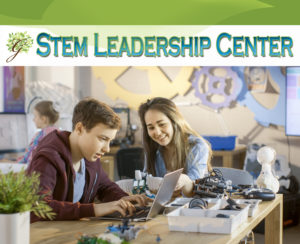“We are not preparing children for the world we have lived in but for a future that we can barely imagine.” Gordon Brown, former dean of the MIT EngineeringSchool.
Jeff Jarvis, author of What Would Google Do?, differentiates between a politically conservative attitude of scarcity and ‘can’t do’ and an innovative engineering attitude of abundance and ‘can do.’ The engineer finds a problem, looks for a solution, finds a need and attacks with innovation, the consummate MacGyver.
I like the mashup of imagination and engineering into the term imagineering. It helps me shape the concept of innovation as the 21st century skill we wish to grow in our children. The first time I encountered the word “imagineer” was listening to Randy Pausch deliver his Last Lecture. He describes this elite corps of Disney engineers, Imagineers, who create futuristic realms for visitors to Disneyland. Randy describes
working with the team that created the Aladdin adventure where participants experience a virtual reality where they fly on carpets through the stories of the Arabian Nights. John Lasseter, Randy Pausch, consummate engineer, imagineered a more beautiful world for his children (and for the world) by his construction and delivery of the Last Lecture.
Imagineers are not simply great story tellers, they create some of the greatest innovations of science, technology, engineering and math used in the service of storytelling. Science, technology, engineering and math (STEM) knowledge is a crucial element of innovation. STEM education is indispensible for all of our students. A hundred years ago, industrialization mandated that all citizens need to be literate in reading. Today, the information age mandates all citizens need to be literate in science, technology and math.
A recent blog from Intel’s Innovation Economy http://blog.theinnovationeconomy.org/ states that “investing in and improving education is vital to our country’s future – particularly in the fields that are leading our technology-based innovation economy: science, technology, engineering and mathematics (STEM).” It quotes the recent report on STEM education from The Information Technology & Innovation Foundation (ITIF): Refueling the U.S. Innovation Economy. “For over a half century, science-based innovation has powered America’s economy, creating good jobs, a high standard of living, and U.S. economic and political leadership. Yet, our nation’s global share of activity in STEM-focused industries is in decline, jeopardizing our status as the world’s leader in innovation. Moreover, there is clear evidence that the United States is consistently not able to produce enough of its own STEM workers in key fields (e.g., computer science, electrical engineering), even though the best universities for studying these subjects are U.S.-based.” Demanding and supporting high quality science, math, engineering and technology education is an absolutely necessary component of cultivating the 21st century skill of innovation.
Today’s hero: Dan Meyer teaches high school math outside of Santa Cruz, CA, and explores the intersection of math instruction, multimedia, and inquiry-based learning. Watch a short introduction to his method’s of math education http://www.youtube.com/watch?v=BlvKWEvKSi8
Today’s question to ask your favorite young person: How could we go about trying to solve this problem?
Free Resource: Programming with Alice is a free download to help your child learn programming through storytelling: http://www.alice.org/
For those of you who live in and around Beaver County, consider supporting the Beaver County STEM Education Advocacy Coalition www.bcstem.ning.com or Facebook BC STEM.
Continue to inspire the hearts and minds of the young people in your life!



